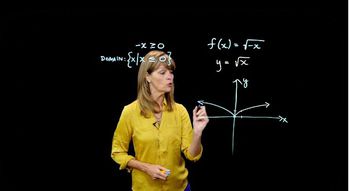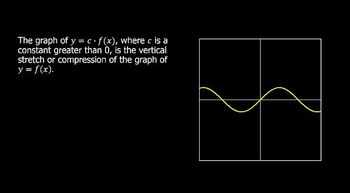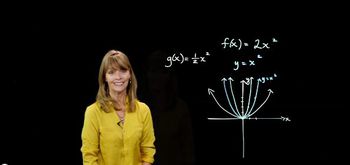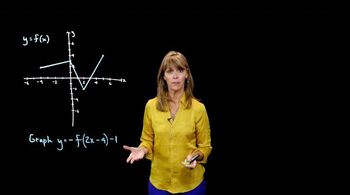Table of contents
- 0. Review of Algebra4h 16m
- 1. Equations & Inequalities3h 18m
- 2. Graphs of Equations43m
- 3. Functions2h 17m
- 4. Polynomial Functions1h 44m
- 5. Rational Functions1h 23m
- 6. Exponential & Logarithmic Functions2h 28m
- 7. Systems of Equations & Matrices4h 6m
- 8. Conic Sections2h 23m
- 9. Sequences, Series, & Induction1h 19m
- 10. Combinatorics & Probability1h 45m
3. Functions
Transformations
Problem 86b
Textbook Question
Graph each function. See Examples 6–8 and the Summary of Graphing Techniques box following Example 9. ƒ(x)=3√x-2
 Verified step by step guidance
Verified step by step guidance1
Identify the basic function: The function \( f(x) = 3\sqrt{x-2} \) is a transformation of the square root function \( \sqrt{x} \).
Determine the transformation: The expression \( x-2 \) inside the square root indicates a horizontal shift. Specifically, the graph of \( \sqrt{x} \) is shifted 2 units to the right.
Identify the vertical stretch: The coefficient 3 in front of the square root indicates a vertical stretch by a factor of 3. This means that each y-value of the basic square root function is multiplied by 3.
Plot key points: Start by plotting the point where the function begins, which is at \( x = 2 \) (since \( \sqrt{x-2} \) is undefined for \( x < 2 \)). Calculate a few more points by substituting values of \( x \) greater than 2 into the function.
Sketch the graph: Use the key points and the transformations identified to sketch the graph. The graph should start at the point (2, 0) and rise to the right, reflecting the vertical stretch and horizontal shift.
Recommended similar problem, with video answer:
 Verified Solution
Verified SolutionThis video solution was recommended by our tutors as helpful for the problem above
Video duration:
1mPlay a video:
Was this helpful?
Key Concepts
Here are the essential concepts you must grasp in order to answer the question correctly.
Graphing Functions
Graphing functions involves plotting points on a coordinate plane to visually represent the relationship between the input (x) and output (f(x)). Understanding how to identify key features such as intercepts, asymptotes, and behavior at infinity is essential for accurately depicting the function's shape.
Recommended video:

Graphs of Logarithmic Functions
Cube Root Function
The cube root function, represented as f(x) = 3√x, is a type of radical function that returns the number which, when cubed, gives the input x. This function is defined for all real numbers and has a characteristic shape that increases gradually, crossing the origin and having a domain and range of all real numbers.
Recommended video:

Imaginary Roots with the Square Root Property
Transformations of Functions
Transformations of functions involve shifting, stretching, or reflecting the graph of a function. In the given function f(x) = 3√x - 2, the '-2' indicates a vertical shift downward by 2 units, which alters the graph's position without changing its shape. Understanding these transformations is crucial for accurately graphing modified functions.
Recommended video:

Domain & Range of Transformed Functions

 5:25m
5:25mWatch next
Master Intro to Transformations with a bite sized video explanation from Nick Kaneko
Start learningRelated Videos
Related Practice

























